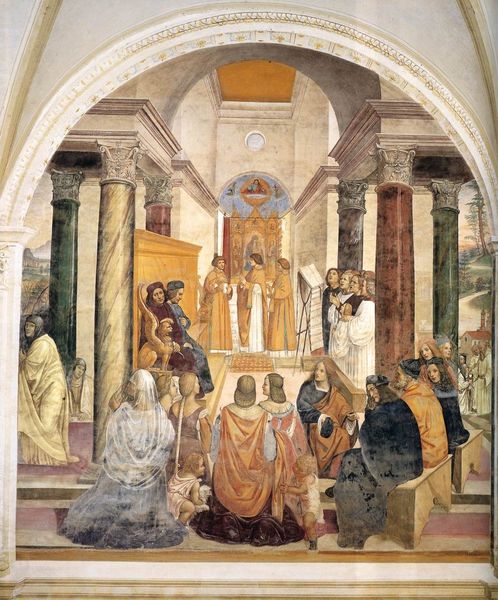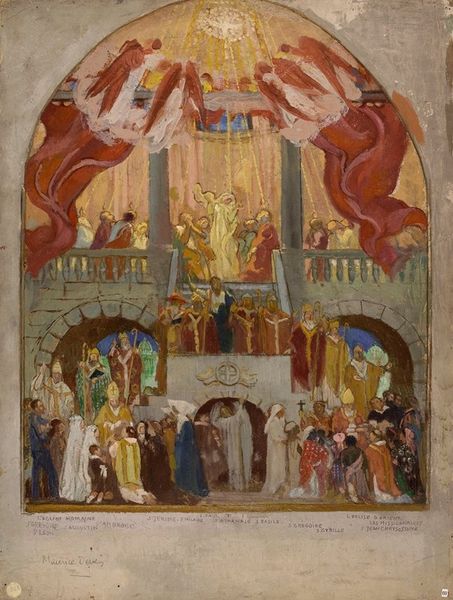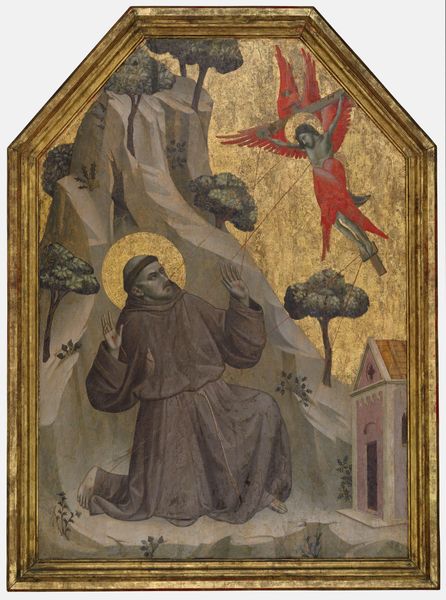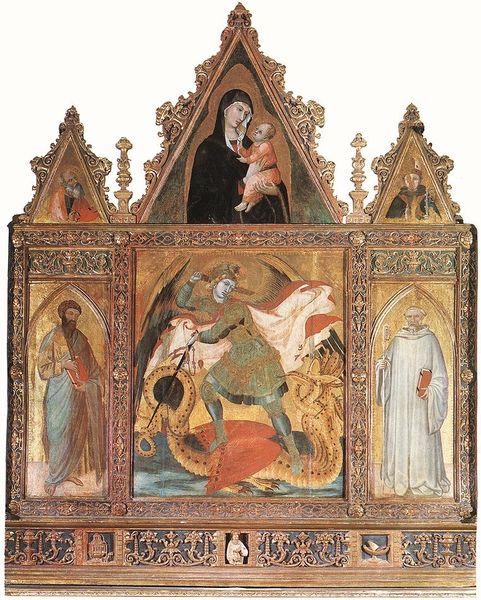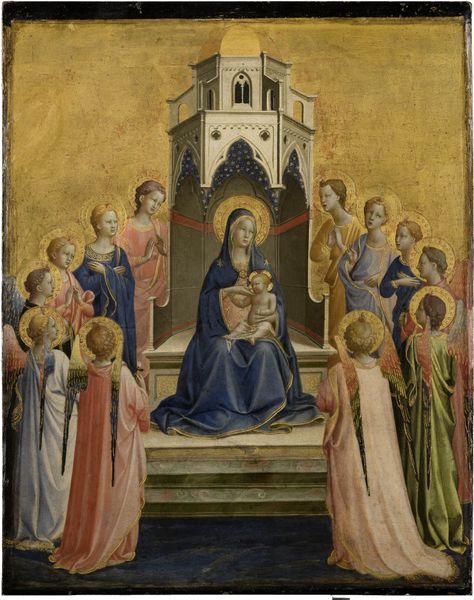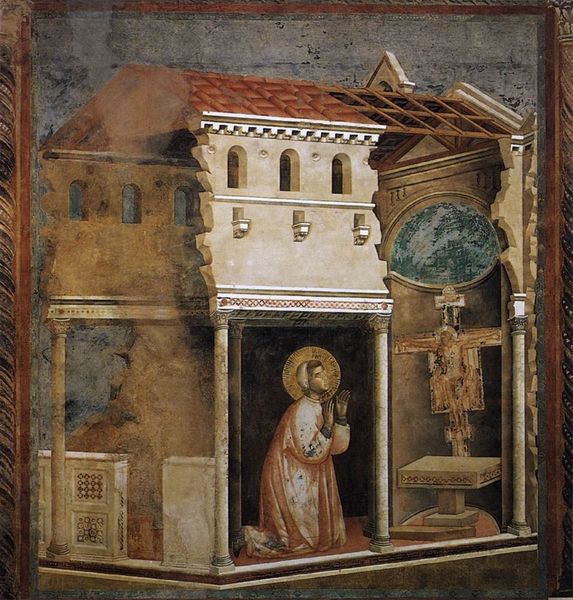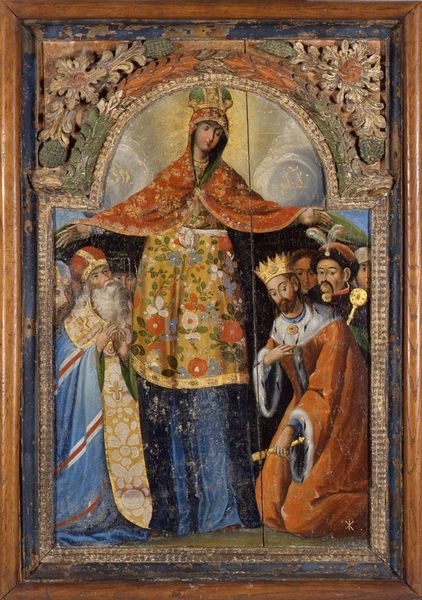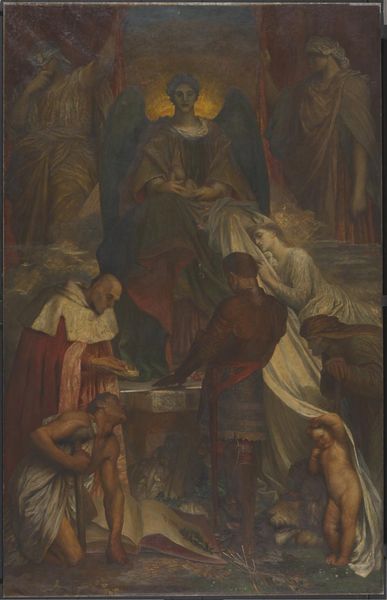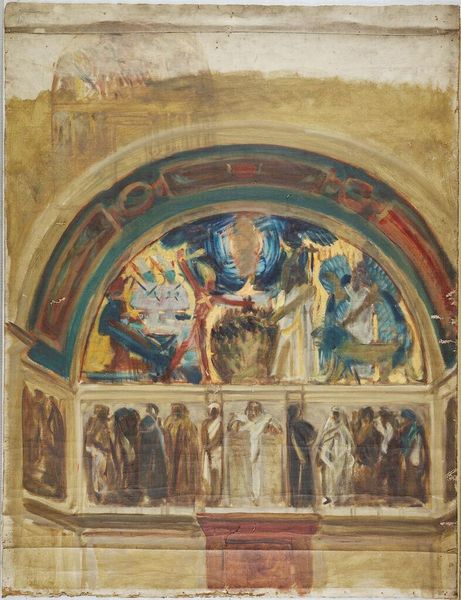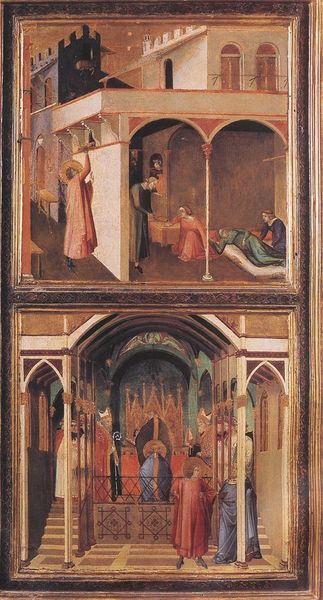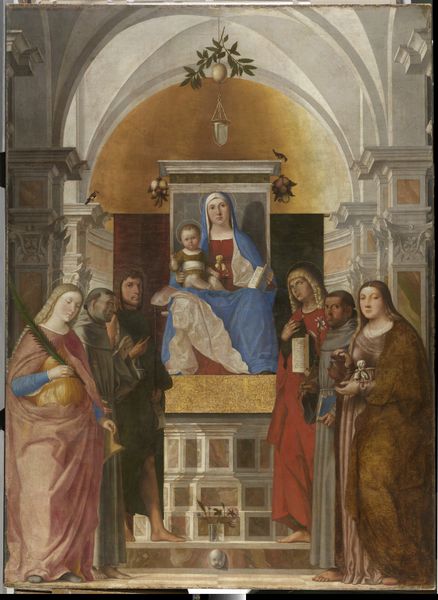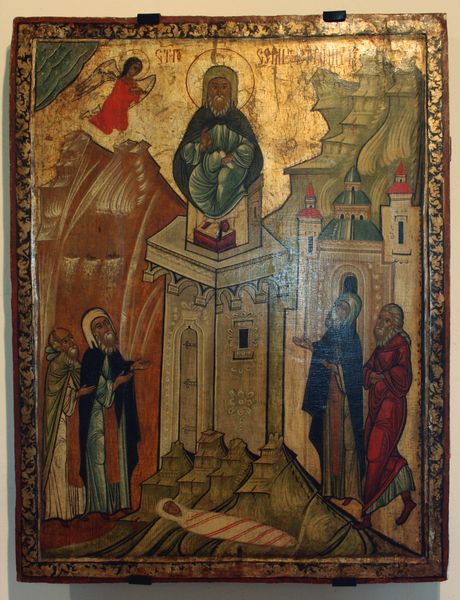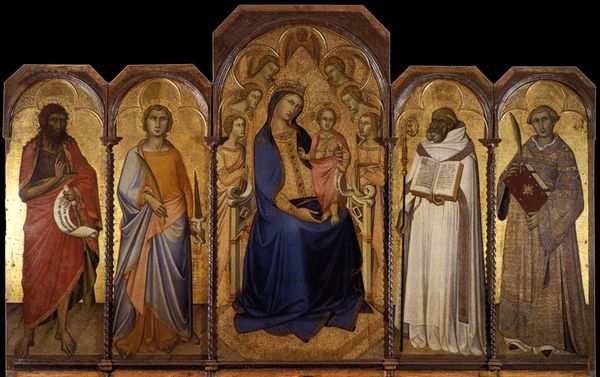
painting, watercolor
#
portrait
#
medieval
#
painting
#
holy-places
#
oil painting
#
watercolor
#
neo-romanticism
#
watercolour illustration
#
history-painting
#
academic-art
#
watercolor
Copyright: Public domain
Curator: Standing before us is "St. Louis, study for a painting done in 1888" by Luc-Olivier Merson, created around 1883. It appears to be a study in watercolor, anticipating a larger oil painting. Editor: It has a delicate quality, almost ethereal, particularly in the way the light seems to wash over the figures. The architectural details are impressive, but that soft, pale palette gives the scene an other-worldly feel. Curator: Merson, a notable figure in academic art, frequently explored historical and religious themes. The piece clearly evokes a sense of medieval piety and power. St. Louis, King Louis IX of France, is depicted enthroned, with what looks like symbols of earthly and heavenly authority. I wonder what Merson's personal motivations were when revisiting themes from France's religious past? Editor: Right, you have a clear distinction of class structure being represented, while the angel with the crown being presented highlights a perceived heavenly validation of the divine right of kings. In that context, Merson could have been attempting to make a point about who gets to wield authority and how their access to this type of privilege impacts others, no? I can also draw lines from Merson and other artists like him at the time—such as Bouguereau—to modern-day debates surrounding gender identity. Bouguereau created highly sexualized images of women in a traditional style while the impressionists deconstructed women beyond their sexual appeal. Are these subtle aesthetic "debates" reflective of gender tensions within society that were emerging around that time? Curator: It is an intriguing question to consider if these academic artists are really a vanguard in preserving an exclusionary perspective of not just women but power itself. But let's look at the other elements. I am curious about the symbols of governance the artist uses: on one hand the king holds what appears to be grapes and in the other his hand is open. This might represent wisdom to me but what would those observing this work at the time think of the fruits this leader provides, or of what they might expect. Editor: That's an interesting interpretation of symbolism and perspective, and it reminds me how crucial it is to explore such art within the framework of its time. Thanks for shining some light on it, hopefully it inspires our listeners to investigate the subject matter too. Curator: And likewise, thank you for offering your valuable perspective on its social narratives!
Comments
No comments
Be the first to comment and join the conversation on the ultimate creative platform.
